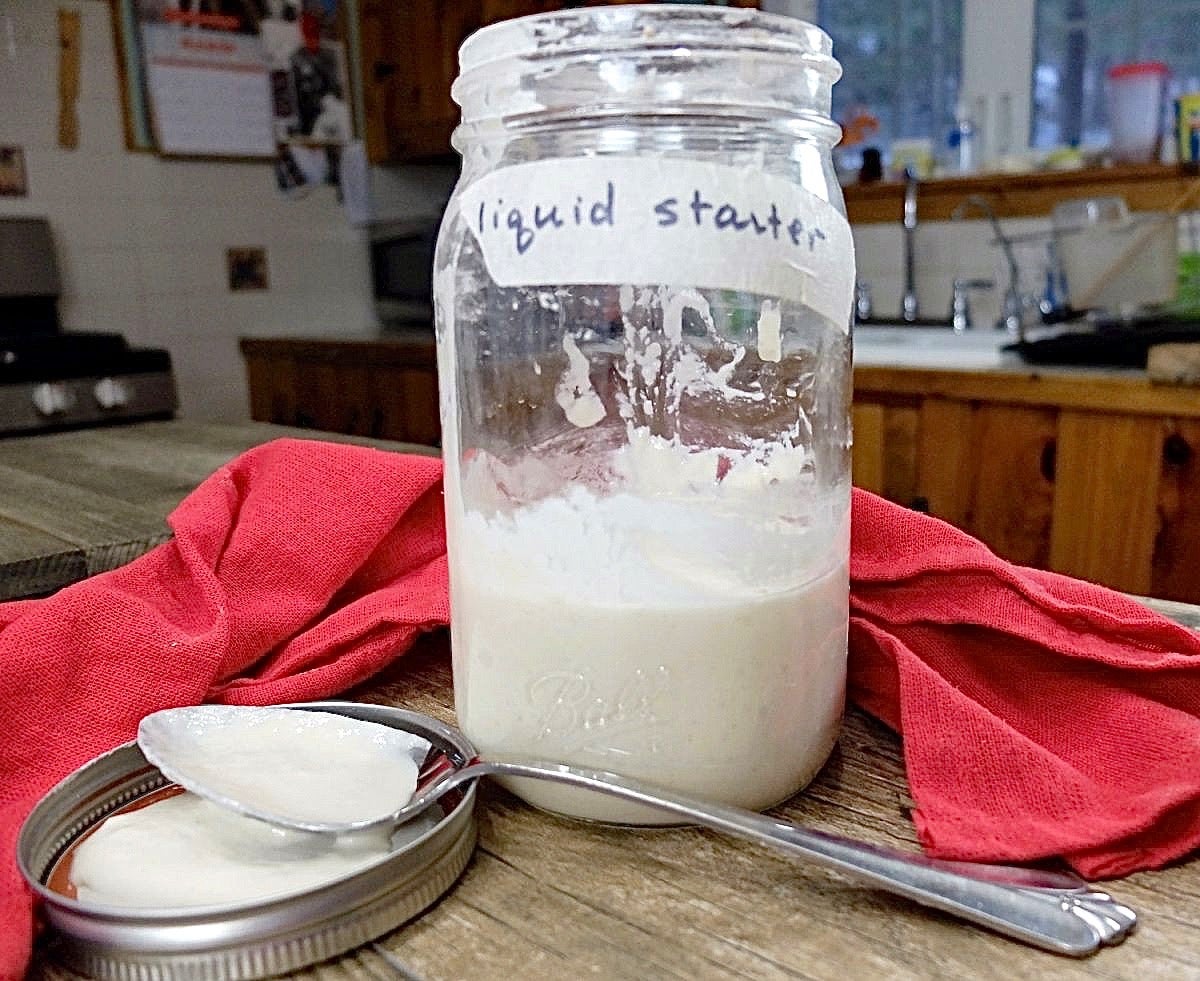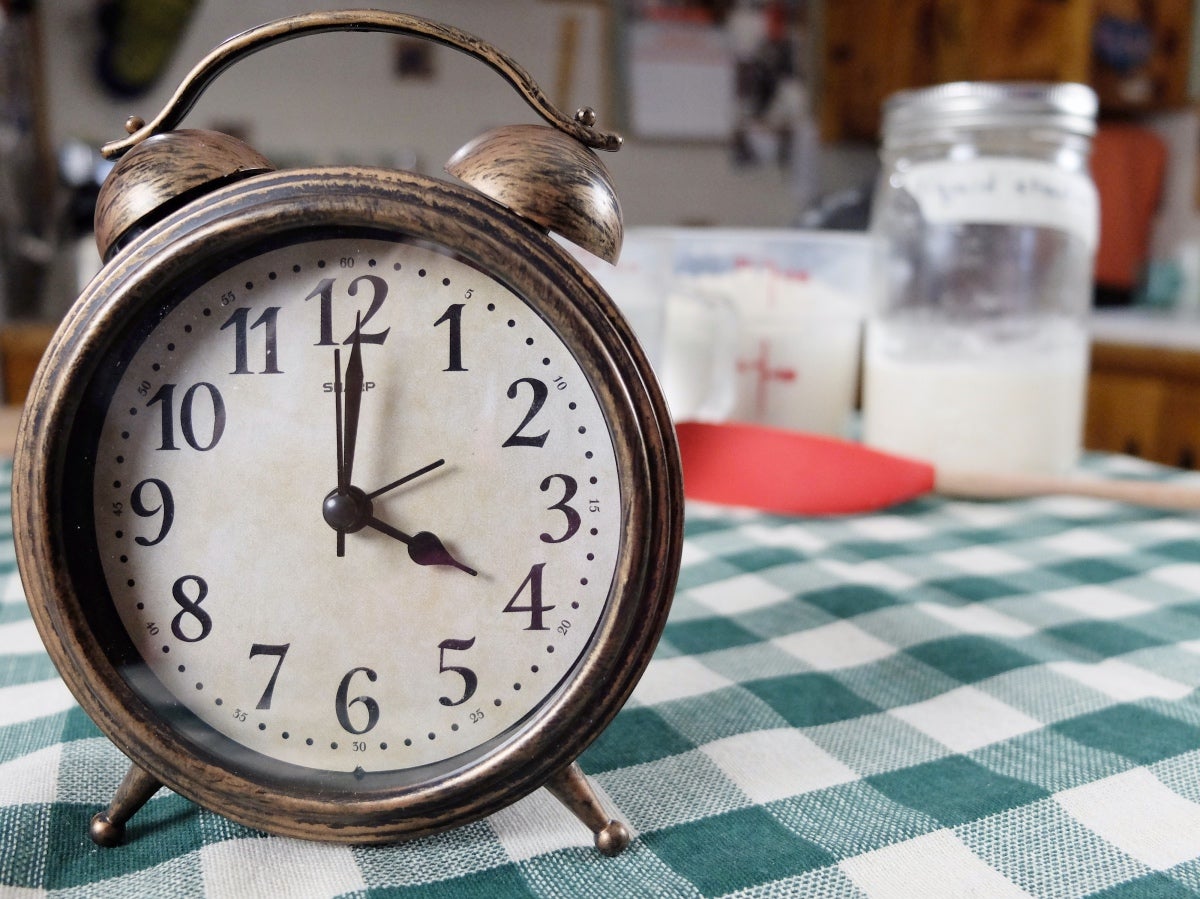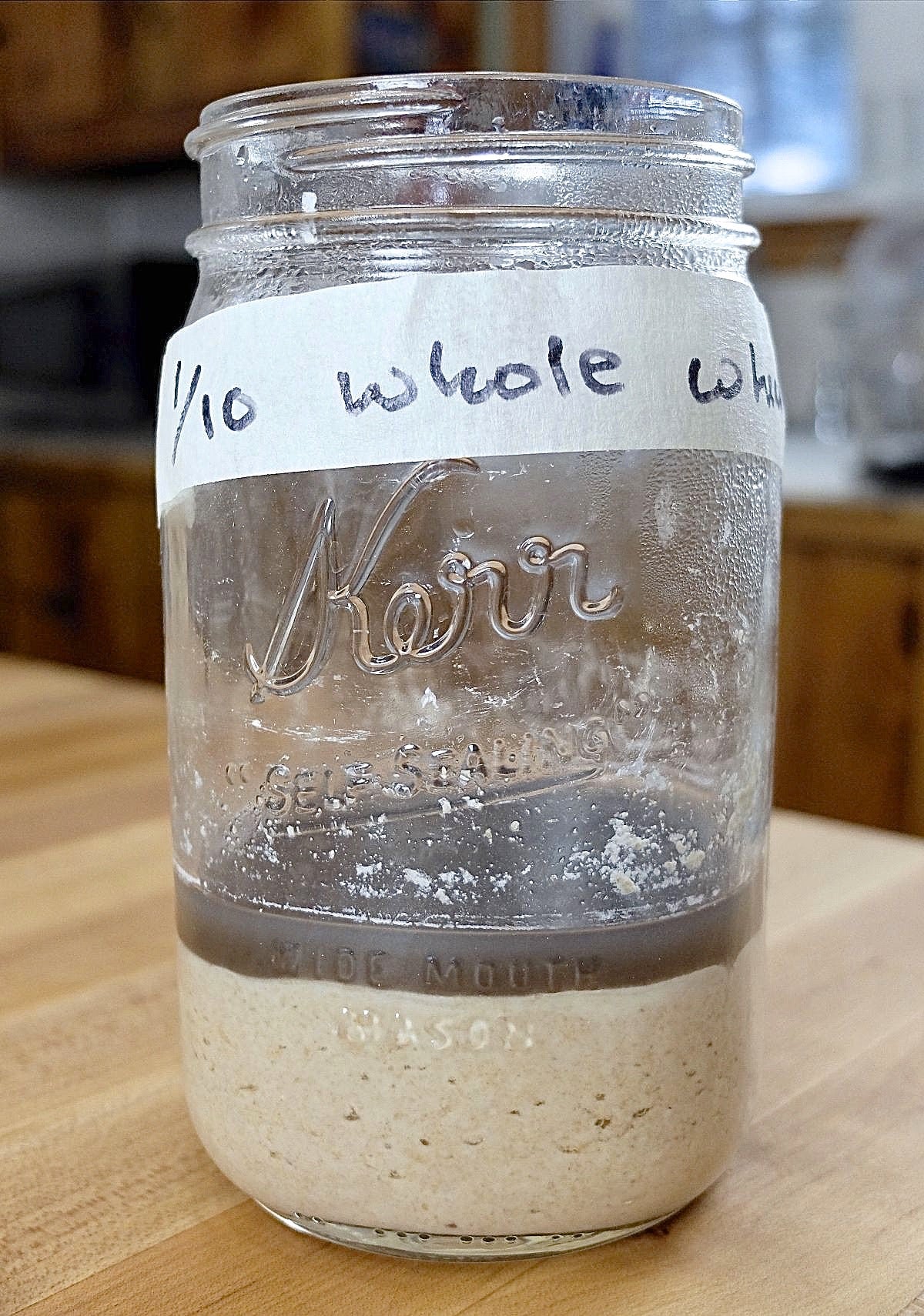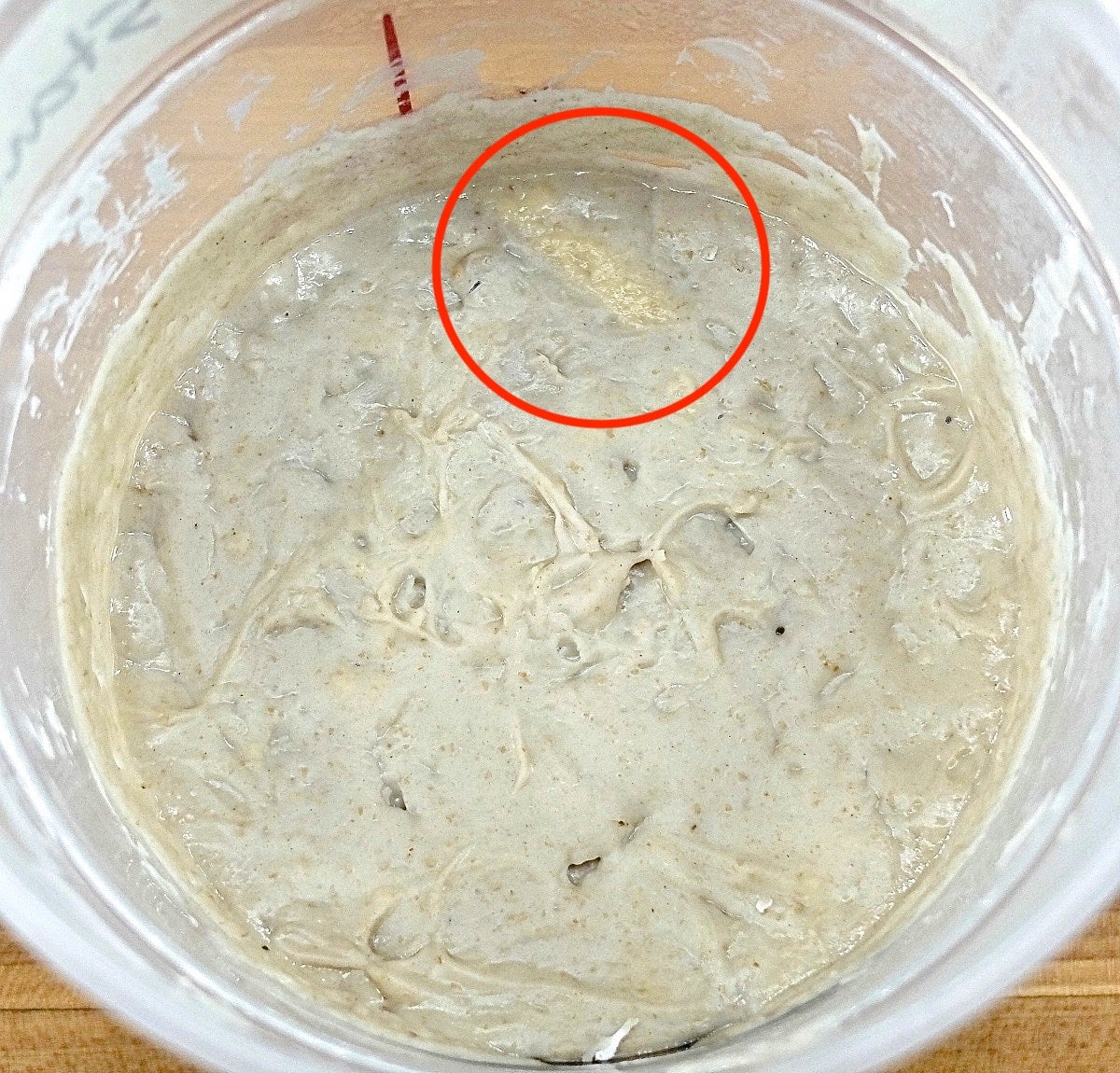


“Did I kill my starter?” This is a surprisingly common sourdough question on our Baker’s Hotline. Novice and experienced bakers alike worry about the viability of their starters and call us for sourdough starter troubleshooting advice.
For many sourdough bakers, the underlying biochemistry at work in their starter remains a bit of a mystery. Thankfully, it's quite possible to bake great sourdough bread while still being a little fuzzy when it comes to what’s actually happening in that little jar of starter.
The 6 to 10 days it takes to create a healthy and mature sourdough starter from scratch requires slightly more attention to "death threats," because a fledgling starter hasn't yet developed the defenses that characterize a mature starter. But once your starter is fully developed, it's really pretty darn hard to kill.
And if you've purchased a sourdough starter from us, rest assured that it's a mature specimen that will stand up well against unwanted bacteria or mold.

METAL: Stirring your starter with a metal spoon or placing it in a metal bowl won't kill your starter. While we don't recommend making or keeping your starter in contact with reactive metals like copper or aluminum, stainless steel is harmless.

MILD NEGLECT: Missing a feeding or not timing the feedings exactly 12 hours apart won't even come close to killing your starter. Please don't ever set your alarm to get up in the middle of the night to feed your starter!
INCORRECT FEEDINGS: Feeding your starter the wrong amount of flour or water won't kill it. While your starter may seem too dry or too wet, and may not rise the way you expect, no permanent damage has been done. You can correct its consistency by adding a little more flour or water, and then being more careful the next time you feed it.
BRIEFLY FREEZING YOUR STARTER: While there's some dispute among sourdough enthusiasts about the benefits and/or dangers of freezing sourdough starter, a brief period in the freezer isn't likely to kill a fully developed starter.
I recently froze a portion of my well-maintained starter a few hours after it was fed. Three days later I thawed it out at room temperature and let it continue to ferment. It was definitely sluggish at first, but after a second feeding it rose well and had a good aroma.
That being said, too much time in the freezer will definitely damage some of the wild yeast in your starter, and is also likely to kill off some of the friendly bacteria that contribute flavor. If you need to put your starter on hold for an extended time, we recommend drying your starter.
HEAT: If you allow your sourdough starter to ferment in the oven with the light on to keep it warm, and then forget it's in there and turn on the oven, it's unlikely your starter will make it out alive. Yeast dies at 140°F, and it's likely that your sourdough starter will suffer at temperatures even lower than that. It’s best to maintain your starter at comfortable room temperature (around 70°F), though a little higher or lower won't hurt anything.
SEVERE NEGLECT: If you neglect your starter long enough, it will develop mold or signs of being overtaken by bad bacteria. Mold can appear in various colors and is typically fuzzy in appearance. Bad bacteria is generally indicated by an orange or pink tinge or streak. Once your starter has lost its natural ability to ward off intruders, it's time to start over.

"Hooch" is the liquid that collects on the top of your starter when it hasn't been fed in awhile. This liquid is the alcohol given off as wild yeast ferments. The presence of hooch isn't a sign that your starter is in danger. However, it does indicate that your starter is hungry and needs to be fed.
When your starter is neglected for an extended period, the hooch tends to turn from clear to dark-colored. We get lots of calls from sourdough bakers worried about the safety or danger of various hooch hues. Is gray bad? What about brown or black? Surprisingly, none of these colors indicate that your starter has spoiled.

However, if you see a pink or orange tint or streak, this is a sure sign that your sourdough starter has gone bad and should be discarded. The stiff starter above was left out at room temperature for two weeks. It's definitely time to throw it out and start over.
I hope you'll share your own sourdough starter questions and discoveries below. There's always more to learn when it comes to sourdough!
For more information, please check out part 2 of this sourdough starter troubleshooting post!


April 18, 2024 at 1:19am
this is my first time making starter, used refined all purpose flour in ratio of 1:1:1, for first 8 days rise and fall, and have little sour smell, which is good i think. then for 2 days it rise and fall to its starting position and never rise again. after that i make 0.5:1:1, it take longer to ferment, again it back to it's starting position. then i changed flour 50/50 wheat and all purpose flour 1:1:1 ration. yesterday it rise and fall again. i don't what I'm doing wrong
April 19, 2024 at 11:46am
In reply to this is my first time making… by Sakthy Mary Pa… (not verified)
Hi Sakthy, it sounds like you may be feeding your starter only once a day, which is causing the starter to rise and fall back to its starting level. Ideally when you're maintaining your starter at room temperature you want to feed it again when it's still ripe (at its peak rise, or just beginning to fall). Allowing the starter to fall significantly between feedings tends to result in sluggish yeast behavior. I would recommend giving your starter twice a day feedings (about 12 hours apart) and see if that improves its rising behavior.
March 9, 2024 at 8:34am
I purchased a starter from you about a month ago. It has been performing beautifully! It now seems to have an acetone scent to it. Is that ok? What should I do to get the pleasant "sour" aroma back?
March 9, 2024 at 9:13am
In reply to I purchased a starter from… by StephanieE (not verified)
Hi Stephanie, an acetone aroma can develop if your starter has been stored in the refrigerator for an extended time without regular feedings. Try giving your starter a few days of twice daily feedings, according to our starter maintenance routine, and I suspect the aroma will improve.
March 6, 2024 at 10:53pm
I just received my sour dough starter (within the last hour). I followed the steps to add 1/4 c Luke warm water then moved to a bowl and added 1 C Luke warm water and 2 cups King Arthur flour and covered loosely with plastic wrap. The consistency is like sticky bread dough. I’d this normal? If no, how can I correct it?
March 8, 2024 at 10:43am
In reply to I just received my sour… by Rachel karas (not verified)
Hi Rachel, I'm sorry we weren't able to answer your question in a more timely fashion! For future reference, the consistency of the starter right after a feeding should be thick and pasty, but still easy to stir. As it rises and ferments it tends to thin out and becomes more like a thick pancake batter. It sounds like you may have added a little extra flour to that initial feeding, which is easy to do when you measure your flour by cups. For best results when using our flours and recipes, we recommend either weighing your flour, or using this method to measure your flour by cups. And keep in mind that the standard maintenance feeding for your new sourdough starter calls for a "scant" cup of flour (which means just a little less than a full cup of flour).
February 21, 2024 at 6:13pm
my new starter is only 3 days old and is rising too much. It's at the top of the jar with 5 hours to go before the next feeding. What should I do?
February 23, 2024 at 5:08pm
In reply to my new starter is only 3… by M Johnson (not verified)
Hi M, it sounds like you might need a larger jar, or perhaps you're not discarding with each feeding? In order for the starter to stay balanced, you want to be relatively consistent in your feeding practices and this generally requires discarding some of your starter each time you do a feeding. Our sourdough starter recipe should fit nicely in a quart-sized Mason jar or takeout container.
February 20, 2024 at 8:15am
My starter was on day 4 and had risen quite nicely, almost to the top of the jar. The next morning I found the started completely collapsed, was very liquidy and had a strong odor. Is it dead?
February 23, 2024 at 4:58pm
In reply to My starter was on day 4 and… by Amber (not verified)
Hi Amber, this is totally normal and your starter is just telling you that it needs another feeding. Ideally, it's best to feed your starter when it's still at that high point of rising, or just starting to fall. This will keep the yeast more vigorous and active, but your starter should still revive well when you give it a feeding.
Pagination